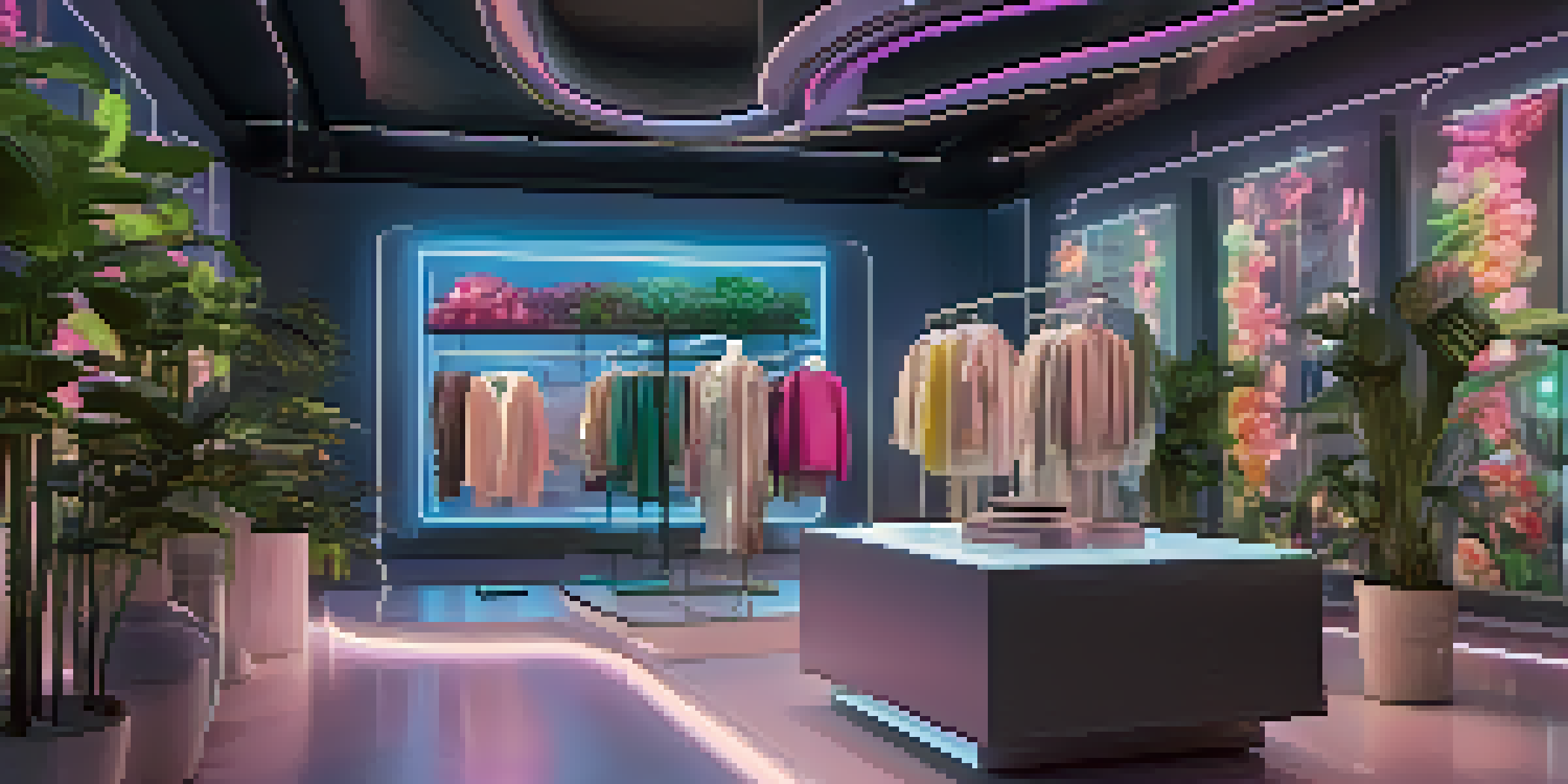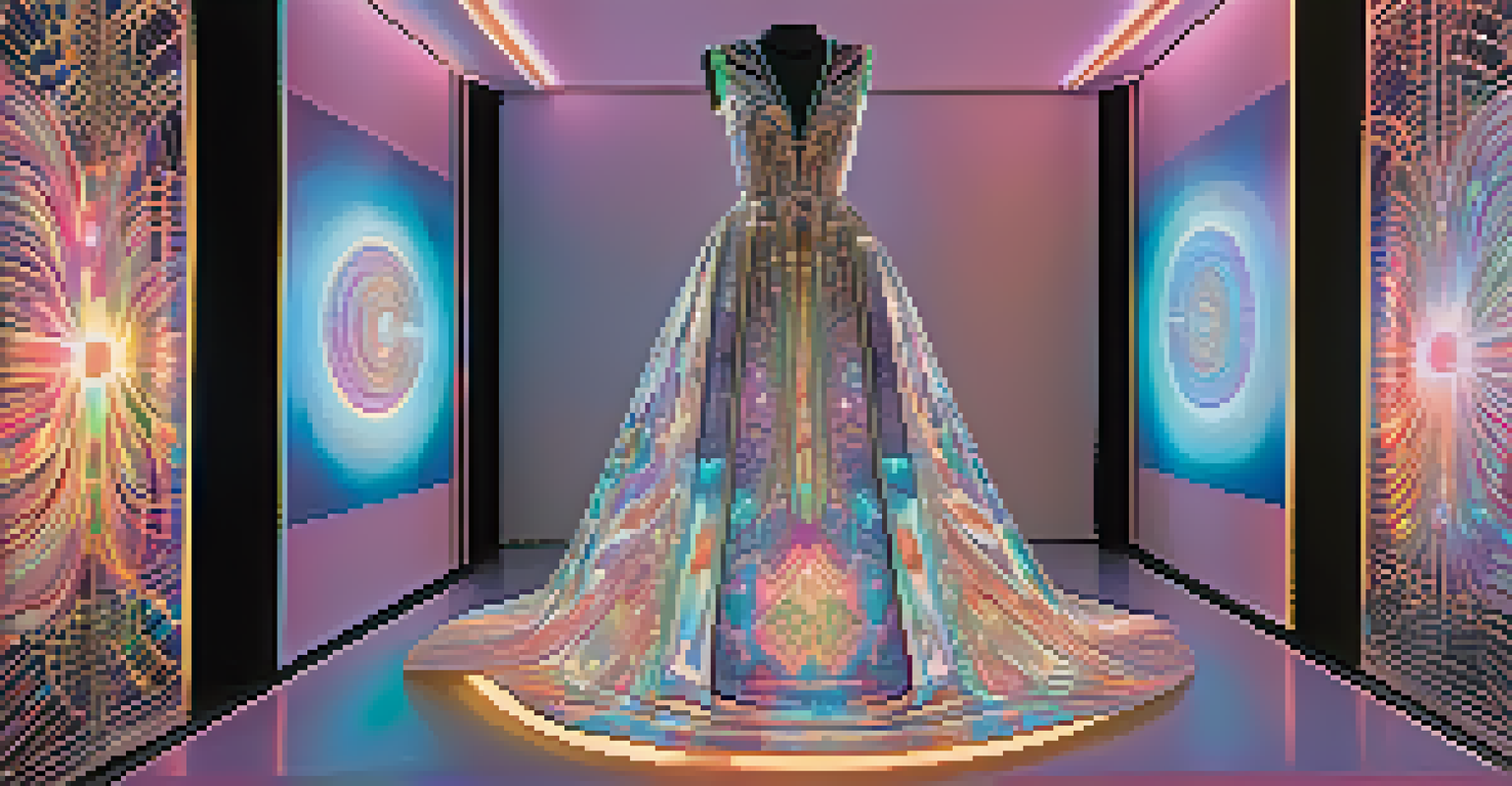NFTs and Sustainable Fashion: A New Era of Eco-Friendly Trends

Understanding NFTs and Their Role in Fashion
NFTs, or non-fungible tokens, are unique digital assets that represent ownership of a specific item, often in art or collectibles. In the fashion industry, they can take the form of digital clothing or accessories, allowing brands to sell limited-edition pieces without the environmental impact of physical production. This innovative approach not only attracts tech-savvy consumers but also aligns with the growing demand for sustainable practices in fashion.
Fashion is the armor to survive the reality of everyday life.
Imagine buying a digital dress that you can wear in virtual reality or social media. This is the power of NFTs—they offer a new way to express personal style without contributing to textile waste. As more brands embrace this technology, they open the door to a future where fashion is not just about what you wear but also how you engage with it.
Moreover, NFTs can provide a transparent record of a garment's lifecycle, offering consumers insights into its sustainability. This information empowers buyers to make informed decisions, further promoting eco-friendly choices in their fashion purchases.
The Environmental Impact of Traditional Fashion
Traditional fashion is notorious for its significant environmental footprint. From water-intensive cotton farming to the pollution caused by dyeing processes, the industry contributes to serious ecological issues. Fast fashion, in particular, encourages overconsumption and waste, leading to millions of tons of discarded clothing every year.

To put this into perspective, consider that producing just one pair of jeans can require over 2,000 gallons of water. As awareness of these impacts grows, consumers are increasingly seeking alternatives that prioritize sustainability. This shift is where NFTs enter the conversation, offering a fresh perspective on how we can enjoy fashion without compromising the planet.
NFTs Enhance Sustainable Fashion
NFTs provide a unique way for fashion brands to offer digital garments, reducing environmental impact while appealing to eco-conscious consumers.
By digitizing fashion, we can reduce the need for physical resources, creating a more sustainable model that preserves our environment. This shift not only speaks to eco-conscious consumers but also challenges brands to rethink their production and marketing strategies.
How NFTs Promote Ethical Fashion Practices
NFTs have the potential to revolutionize ethical fashion by promoting transparency and fair practices. For instance, a brand could use an NFT to verify that a garment was produced under fair labor conditions, thus providing consumers with peace of mind. This transparency builds trust and encourages brands to uphold ethical standards, fostering a more responsible fashion industry.
Sustainability is no longer a trend; it is a necessity for the future of fashion.
Consider a luxury brand that issues NFTs alongside its garments, providing detailed information about the sourcing of materials and the manufacturing process. This approach not only enhances the value of the product but also appeals to consumers who are increasingly conscious of their purchases' ethical implications.
By leveraging blockchain technology, NFTs can create a permanent and tamper-proof record, making it easier to track the origins of materials and labor practices. This innovation could push the industry towards greater accountability while inspiring other brands to adopt similar practices.
Consumer Demand for Sustainable Fashion Solutions
The demand for sustainable fashion has surged in recent years, driven by consumer awareness of environmental issues. Shoppers are now more inclined to support brands that prioritize eco-friendly practices, making sustainability a key selling point. As a result, fashion brands are exploring innovative solutions, including NFTs, to meet this growing demand.
Imagine walking into a store and seeing digital garments displayed alongside physical ones, offering you a choice that aligns with your values. This blending of traditional and digital fashion could redefine shopping experiences, making sustainability more accessible and appealing to a broader audience.
Transparency in Ethical Practices
By utilizing NFTs, brands can verify fair labor practices and material sourcing, fostering trust and accountability among consumers.
As consumers become more educated about their choices, brands must adapt to stay relevant. Embracing NFTs not only caters to this shift but also signals a commitment to sustainability, setting a benchmark for what modern fashion should represent.
Innovative Collaborations in NFT Fashion
Collaborations between fashion brands and digital artists are on the rise, creating unique NFT collections that blend creativity with sustainability. These partnerships often result in one-of-a-kind pieces that can only be owned as digital assets, appealing to collectors and fashion enthusiasts alike. Such collaborations illustrate how the fashion industry can innovate while embracing eco-friendly practices.
For example, a well-known designer might team up with a digital artist to create a limited-edition virtual garment. This not only showcases the designer's aesthetic but also reduces waste associated with physical production, offering a fresh take on luxury fashion.
These innovative collaborations can also serve as a platform for emerging artists and designers, providing them with visibility in a crowded market. By supporting new talent, established brands can enhance their own sustainability efforts while fostering a community of creativity and responsibility.
Challenges and Opportunities in NFT Fashion
While NFTs present exciting opportunities for sustainable fashion, they also come with challenges. One major concern is the environmental impact of blockchain technology, particularly the energy consumption associated with some NFT transactions. As brands explore this space, they must consider how to balance innovation with sustainability to avoid unintended consequences.
However, these challenges also spur innovation as companies seek greener solutions, such as using eco-friendly blockchain platforms. By prioritizing sustainability in their NFT strategies, brands can lead the way in creating a more responsible digital fashion landscape.
Innovative Collaborations Flourish
Fashion brands are partnering with digital artists to create exclusive NFT collections, blending creativity and sustainability in the industry.
Moreover, as the market matures, we may see regulations and standards emerge that address these concerns. This evolution could pave the way for safer, more sustainable practices in the NFT space, benefiting both the environment and the industry as a whole.
The Future of Sustainable Fashion and NFTs
As we look ahead, the intersection of NFTs and sustainable fashion holds immense potential. With a growing emphasis on eco-friendly practices, brands that adopt NFTs can position themselves as leaders in this new era of fashion. This evolution not only caters to consumer demand but also encourages a collective effort toward a more sustainable future.
Imagine a world where every garment you purchase comes with a digital counterpart, allowing you to showcase your style while minimizing your carbon footprint. This vision can become a reality as more brands recognize the value of integrating NFTs into their strategies.

In conclusion, the fusion of NFTs and sustainable fashion represents a promising shift in the industry. By embracing this innovative technology, brands can not only enhance their offerings but also contribute to a healthier planet, making fashion not just a trend but a movement.